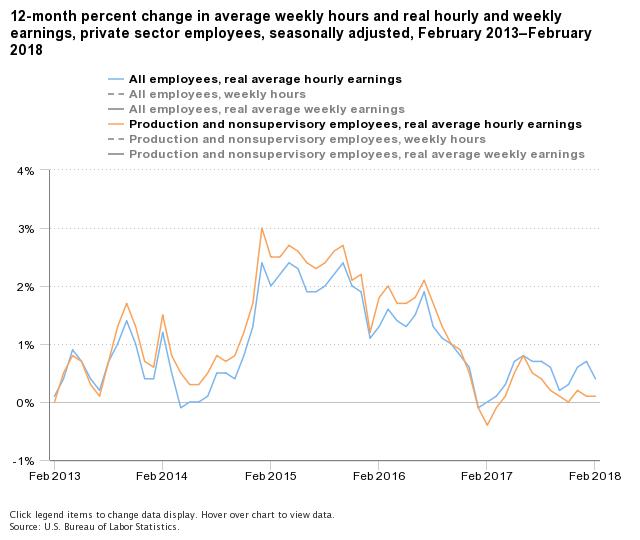Data from the US Bureau of Labor Statistics shows from February 2017 to February 2018, real average hourly earnings increased 0.4 percent, seasonally adjusted. The increase in real average hourly earnings combined with a 0.3-percent increase in the average workweek resulted in a 0.6-percent increase in real average weekly earnings over the 12-month period.
Real average hourly earnings for production and nonsupervisory employees increased 0.2 percent from January to February, seasonally adjusted. This result stems from a 0.3-percent increase in average hourly earnings combined with a 0.1-percent increase in the Consumer Price Index for Urban Wage Earners and Clerical Workers.
Real average weekly earnings increased 0.8 percent over the month due to the increase in real average hourly earnings combined with a 0.6-percent increase in average weekly hours.
From February 2017 to February 2018, real average hourly earnings increased 0.1 percent, seasonally adjusted. The increase in real average hourly earnings combined with a 0.6-percent increase in the average workweek resulted in a 0.7-percent increase in real average weekly earnings over this period.
NOTE: Seasonally adjusted data are used for estimates of percent change from the same month a year ago for current and constant average hourly and weekly earnings. Special techniques are applied to the CES hours and earnings data in the seasonal adjustment process to mitigate the effect of certain calendar-related fluctuations. Thus, over-the-year changes of these hours and earnings are best measured using seasonally adjusted series. A discussion of the calendar-related fluctuations in the hours and earnings data and the special techniques to remove them is available in the February 2004 issue of Employment and Earnings or at www.bls.gov/ces/cesfltxt.htm.

